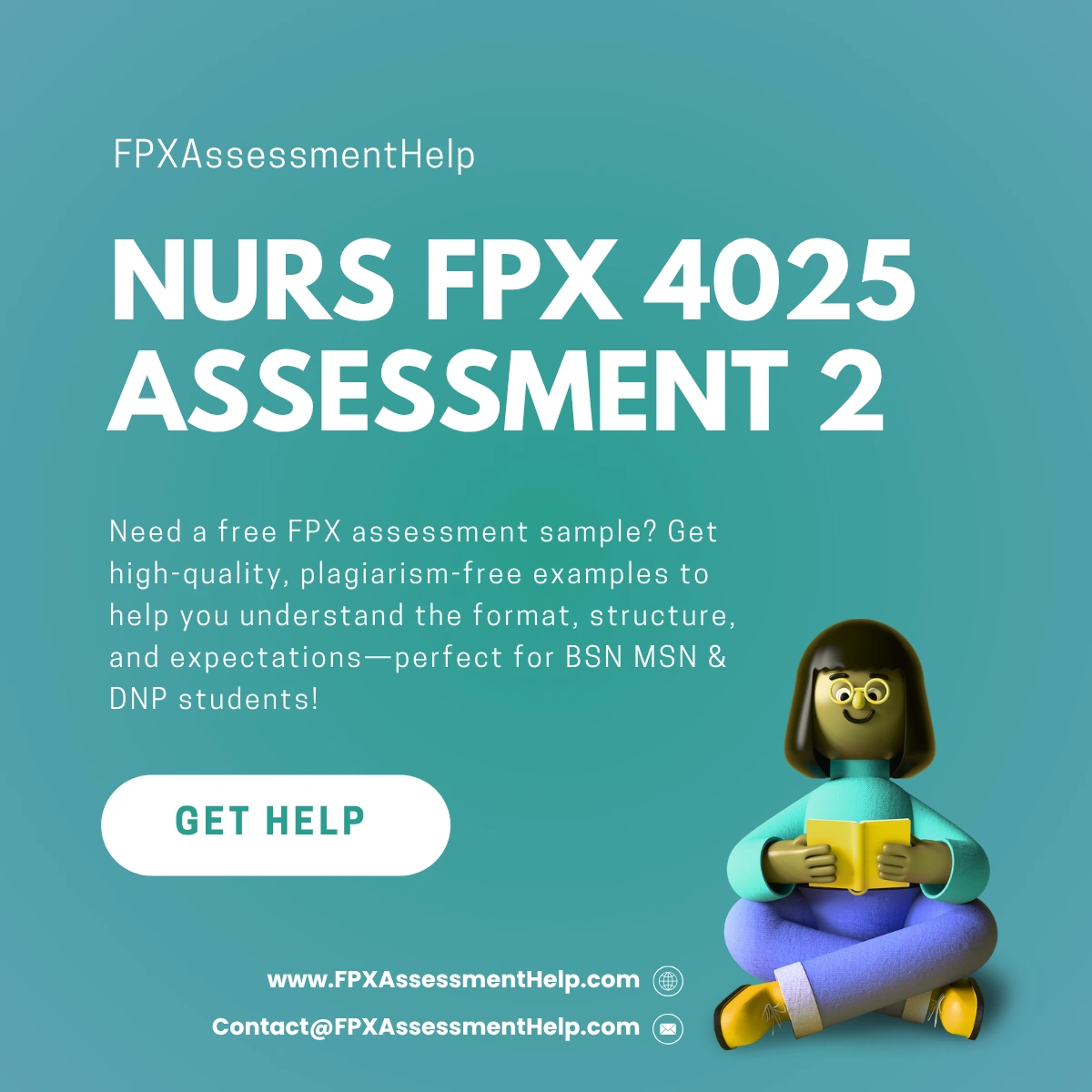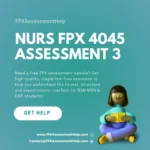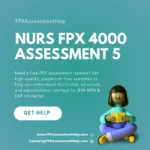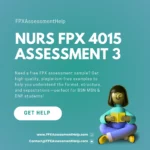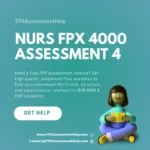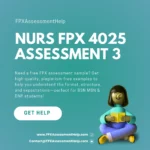NURS FPX 4025 Assessment 2 Applying an EBP Model
Student Name
Capella University
NURS-FPX4025 Research and Evidence-Based Decision Making
Prof. Name
Date
Applying an Evidence-Based Practice (EBP) Model
Acute Heart Failure (AHF) is characterized by a sudden onset or escalation of symptoms commonly resulting from fluid accumulation in the body. This condition is a leading cause of unplanned hospital admissions, particularly among elderly populations, and it contributes significantly to increased healthcare costs and mortality (Mauro et al., 2023). To address this, the Johns Hopkins Nursing Evidence-Based Practice (JHNEBP) model serves as a structured approach that facilitates the integration of the best available evidence into clinical decision-making. This model is particularly effective in guiding treatment strategies for AHF by promoting systematic evaluation of high-quality studies.
A significant clinical concern related to AHF is its recurrent nature, often exacerbated by insufficient patient education on self-management. Inadequate understanding of fluid restrictions, dietary requirements, and medication adherence can lead to fluid overload, kidney dysfunction, and repeated hospital visits (Njoroge & Teerlink, 2021). According to Mauro et al. (2023), readmission rates for AHF patients are approximately 10.1%, with 1-year mortality reaching 30.2%, and the average cost per hospitalization exceeding \$16,000. These figures underscore the urgent need for effective EBP strategies aimed at patient education and self-care enhancement.
Nurse-led interventions rooted in EBP offer a viable solution by emphasizing lifestyle counseling and structured follow-up. Research by Okazaki et al. (2024) demonstrates the effectiveness of nurse-led educational initiatives in reducing rehospitalization rates, enhancing quality of life, and promoting disease awareness. Structured EBP programs, such as early post-discharge telephone follow-ups, have been shown to minimize symptom deterioration. Kalaldeh et al. (2024) further support the value of tailored educational interventions in improving medication adherence and promoting physical activity, ultimately reducing organ complications and mortality. These findings illustrate how EBP empowers nurses to deliver targeted care that meets individual patient needs, facilitating long-term management of AHF and improving clinical outcomes.
EBP Model and Its Steps
The JHNEBP model is built on a PET (Practice Question, Evidence, and Translation) framework, which allows clinicians to identify patient-centered problems, appraise relevant evidence, and implement applicable solutions (Johns Hopkins Medicine, 2022). This structured approach ensures that healthcare providers make informed decisions that are tailored to the complexities of AHF care.
| PET Step | Description | Example (AHF Context) |
|---|---|---|
| Practice Question | Formulate a focused clinical question related to patient care. | “How can nurse-led education improve self-care and reduce readmissions in AHF patients?” |
| Evidence | Conduct a literature review to find supporting studies. | Search databases for studies on nursing interventions, symptom management, and compliance. |
| Translation | Integrate research findings into practical clinical interventions. | Use teach-back methods and provide written materials to educate patients effectively. |
During the Practice Question stage, the focus is on improving patient outcomes through enhanced self-care behaviors. The Evidence stage involves analyzing systematic reviews, randomized controlled trials, and meta-analyses to determine effective strategies. Studies, such as those by Kalaldeh et al. (2024), support the implementation of education sessions covering medication regimens, symptom monitoring, and lifestyle modification.
In the Translation phase, clinical feasibility is assessed, and interventions are customized to the patient’s literacy level and needs. Practical techniques—such as distributing printed instructions and utilizing the teach-back method—are used to reinforce understanding and adherence. The JHNEBP model’s structured pathway ensures that interventions are evidence-informed, actionable, and aligned with the goal of reducing AHF readmissions and enhancing patient autonomy.
Applying the JHNEBP Model to Search
In applying the JHNEBP model, the search process begins with constructing a research question using the PICOT format: In AHF patients, how does nurse-led self-care education (I) compared to standard discharge care (C) affect patient outcomes and readmissions (O) within three months (T)? This question guides the systematic search for literature using databases like PubMed, CINAHL, and the Cochrane Library. Key search terms included “AHF patients,” “nurse-led education,” “self-care practices,” and “symptom management.”
While the search yielded valuable findings, challenges included identifying robust clinical trials with large sample sizes and filtering studies directly relevant to nursing practice. Despite these limitations, credible literature highlighted the role of tailored patient education in improving outcomes. For instance, Kalaldeh et al. (2024) emphasized the significance of literacy-sensitive strategies, such as one-on-one counseling and simplified materials.
The Translation phase involved assessing how findings could be realistically integrated into clinical settings. Diverse strategies were necessary to accommodate different patient needs, ensuring information was accessible and actionable. These interventions helped nursing staff develop comprehensive care plans, ultimately decreasing the likelihood of readmission and enhancing symptom control.
Credibility and Relevance of Resources
Assessing source quality using the CRAAP (Currency, Relevance, Authority, Accuracy, Purpose) test is essential in ensuring effective interventions for AHF patients. The table below summarizes key sources evaluated using CRAAP criteria:
| Source | Currency | Relevance | Authority | Accuracy | Purpose |
|---|---|---|---|---|---|
| Stahlman et al. (2023) | Recent (2023) | AHF management, education, and readmission | Peer-reviewed, reputable authors | Prospective cohort design | Inform healthcare professionals on education strategies |
| Ribeiro et al. (2022) | Up-to-date | Education + follow-up care in heart failure | Published in peer-reviewed journal | Meta-analysis of RCTs | Reduce readmissions and mortality |
| Collins et al. (2021) | Recent (2021) | Self-care post-ED discharge | Respected clinical researchers | Randomized clinical trial | Improve post-discharge outcomes via education |
Stahlman et al. (2023) demonstrated that structured education reduced readmission from 96.1% to 35.2% within 90 days. Ribeiro et al. (2022) showed that combining home visits with phone support decreased both readmission and mortality rates by over 35%. Collins et al. (2021) emphasized the importance of virtual access to care in enhancing continuity and education.
Among the reviewed resources, Stahlman et al. (2023) proved most directly applicable to current clinical concerns, offering practical guidance on reducing readmissions through individualized education sessions. These findings reinforce the importance of evidence-informed, nurse-led interventions in managing AHF.
Conclusion
Integrating Evidence-Based Practice into AHF care is critical to improving patient outcomes. The JHNEBP model provides a robust structure for evaluating and applying high-quality research, ensuring interventions are both practical and evidence-driven. By utilizing nurse-led education strategies and implementing structured self-care interventions, healthcare providers can significantly reduce readmissions and promote better symptom management. Through this model, the delivery of patient-centered, evidence-based interventions becomes not only feasible but essential in optimizing the management of acute heart failure.
References
Collins, S. P., Liu, D., Jenkins, C. A., Storrow, A. B., Levy, P. D., Pang, P. S., & Butler, J. (2021). Effect of a self-care intervention on 90-day outcomes in patients with acute heart failure discharged from the emergency department: A randomized clinical trial. JAMA Cardiology, 6(2), 200–208. https://doi.org/10.1001/jamacardio.2020.5763
Johns Hopkins Medicine. (2022). Evidence-based practice model & tools. https://www.hopkinsmedicine.org/evidence-based-practice/model-tools
Kalaldeh, A. A., Alhameed, W., Olime, S. A., Sabra, M., & Alreshidi, N. (2024). Tailored nurse-led education to enhance self-care for patients with heart failure and acute kidney injury. International Journal of Africa Nursing Sciences, 20, 100738. https://doi.org/10.1016/j.ijans.2024.100738
Mauro, C., Chianese, S., Cocchia, R., Arcopinto, M., Auciello, S., Capone, V., Carafa, M., Carbone, A., Caruso, G., Castaldo, R., Citro, R., Crisci, G., D’Andrea, A., D’Assante, R., D’Avino, M., Ferrara, F., & Marra, A. M. (2023). Acute heart failure: Diagnostic–therapeutic pathways and preventive strategies—a real-world clinician’s guide. Journal of Clinical Medicine, 12(3), 846. https://doi.org/10.3390/jcm12030846
NURS FPX 4025 Assessment 2 Applying an EBP Model
Njoroge, J. N., & Teerlink, J. R. (2021). Pathophysiology and therapeutic approaches to acute decompensated heart failure. Circulation Research, 128(10), 1468–1486. https://doi.org/10.1161/circresaha.121.318186
Okazaki, M., Suzuki, T., Mizuno, A., Ikegame, T., Ito, N., Onoda, M., Miyawaki, I., Moriyama, Y., Yabuki, T., Yamada, S., Yoneoka, D., Iwasawa, Y., Tagami, K., & Yoshikawa, K. (2024). Propelling nurse-led structured intervention to enhance self-care among patients with chronic heart failure (PROACT-HF): A cluster randomized controlled trial study protocol. Journal of Personalized Medicine, 14(8), 832. https://doi.org/10.3390/jpm14080832
Ribeiro, C., Freire, A., Costa, A., Oliveira, A. S., César, A., Barreto, A. S., Rita, D., & Santana-Santos, E. (2022). Educational nursing intervention in reducing hospital readmission and the mortality of patients with heart failure: A systematic review and meta-analysis. Journal of Cardiovascular Development and Disease, 9(12), 420. https://doi.org/10.3390/jcdd9120420
Stahlman, S., Huizar-Garcia, S., Lipscomb, J., Frei, C., & Oliver, A. (2023). Implementation of a heart failure educational intervention for patients with recent admissions for acute decompensated heart failure. Frontiers in Cardiovascular Medicine, 10. https://doi.org/10.3389/fcvm.2023.1133988
